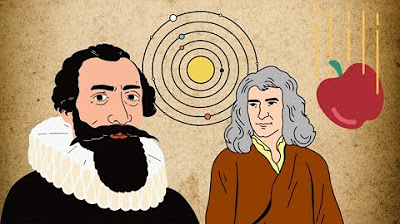ExoDet1A: Kepler's Laws | 1. Celestial Mechanics | EXOPLANET DETECTION
Summary
TLDRIn this introductory video on exoplanet detection, we explore the foundational concepts of celestial mechanics, emphasizing the importance of understanding planetary orbits. The discussion highlights Kepler's laws of planetary motion, which transformed our understanding of the cosmos. Through the historical lens of astronomers like Johannes Kepler and Tycho Brahe, we learn about the evolution of planetary models from geocentric to heliocentric views. The video underscores the significance of Kepler's observations and introduces his three laws, setting the stage for deeper explorations into gravitational theory and its implications for modern astronomy.
Takeaways
- 😀 Exoplanet detection is a vital part of modern astronomy, transforming from an aspirational study to a cornerstone of astronomical programs.
- 🌌 Understanding exoplanet orbits is crucial for interpreting exoplanet data, surface habitability, and formation modeling.
- 🪐 Kepler's laws of planetary motion provide a foundational framework for understanding how planets move around the Sun.
- 📜 The historical study of planetary motion dates back to ancient Babylonian astronomy, where planets were viewed as 'wandering stars.'
- 🔭 Johannes Kepler was instrumental in deciphering planetary motion, particularly focusing on the perplexing motion of Mars.
- 🌍 The geocentric model of the universe, where Earth is at the center, was commonly accepted until the heliocentric model was proposed by Copernicus.
- 🌀 Kepler’s First Law states that planets follow elliptical orbits with the Sun at one focus, which was a significant advancement in understanding celestial mechanics.
- ⚖️ The Second Law explains that planets sweep out equal areas in equal time intervals, illustrating their varying speeds in orbit.
- 📏 Kepler's Third Law relates the orbital period of a planet to its distance from the Sun, and it continues to be used in modern astronomy.
- 🔍 The video sets the stage for the next discussion on Newton's Universal Law of Gravitation, which will explain the origins of Kepler's laws.
Q & A
What is the primary focus of this video series?
-The series focuses on exoplanet detection techniques that have become central to modern astronomy.
Why is understanding exoplanet orbits important?
-Understanding exoplanet orbits is crucial for interpreting exoplanet data and is foundational for topics like surface habitability and formation modeling.
What are Kepler's laws, and why are they foundational?
-Kepler's laws describe the motion of planets in our solar system. They are foundational because they provide essential observational insights into planetary motion and set the stage for later understanding, including Newton's laws of gravitation.
Who was Johannes Kepler, and what was his contribution to astronomy?
-Johannes Kepler was a German astronomer who formulated three laws of planetary motion, fundamentally changing our understanding of how planets orbit the Sun.
What is the significance of Mars in Kepler's studies?
-Mars was significant because its complex motion, including retrograde motion, posed challenges that Kepler aimed to solve, ultimately leading to his formulation of the laws of planetary motion.
What was the geocentric model, and who advocated for it?
-The geocentric model posited that the Earth was at the center of the universe. This model was notably advocated by the Greek astronomer Ptolemy.
How did the Copernican model differ from the geocentric model?
-The Copernican model proposed that the Sun was at the center of the universe, with planets, including Earth, orbiting around it, contrasting with the geocentric view where Earth was central.
What is retrograde motion, and how is it explained?
-Retrograde motion refers to the apparent reversal of a planet's movement in the sky. It can be explained through the relative positions and motions of Earth and other planets, such as Mars, during conjunction.
What are the three laws of planetary motion proposed by Kepler?
-Kepler's three laws are: 1) Planets orbit the Sun in ellipses with the Sun at one focus, 2) Planets sweep out equal areas in equal intervals of time, and 3) The square of a planet's orbital period is proportional to the cube of its semi-major axis.
What did Kepler's work lack that Newton later addressed?
-Kepler's work lacked a fundamental understanding of why his laws worked. Isaac Newton later provided a theoretical framework for these laws through his law of universal gravitation.
Outlines

このセクションは有料ユーザー限定です。 アクセスするには、アップグレードをお願いします。
今すぐアップグレードMindmap

このセクションは有料ユーザー限定です。 アクセスするには、アップグレードをお願いします。
今すぐアップグレードKeywords

このセクションは有料ユーザー限定です。 アクセスするには、アップグレードをお願いします。
今すぐアップグレードHighlights

このセクションは有料ユーザー限定です。 アクセスするには、アップグレードをお願いします。
今すぐアップグレードTranscripts

このセクションは有料ユーザー限定です。 アクセスするには、アップグレードをお願いします。
今すぐアップグレード関連動画をさらに表示
5.0 / 5 (0 votes)






